Beverly Gray's Blog: Beverly in Movieland, page 88
June 6, 2017
An Incident in Portland: The More Things Change, The More They Remain the Same

The city of Portland, Oregon is still reeling from an ugly racial incident that occurred on a light-rail train on Friday, May 26. A white supremacist who’d apparently been drinking began assailing two young women (one wearing a hijab) with anti-Muslim slurs and other barbed taunts. When some men in the car spoke up in the women’s defense, he pulled out a knife. Suddenly both a recent college graduate, Taliesin Namkai-Meche, and a former Army sergeant, Nick Best, were dead, while young poet Micah Fletcher barely escaped with his life.
It’s a horrible occurrence, and something of a surprise in what’s sometimes called Portlandia, a city with a reputation for the quirky acceptance of differences. And it made me think of a small indie film that came out fifty years ago. A glance at The Incident (1967) reminds me that bigotry and a propensity for violence are still a part of the American scene, even if their targets continue to evolve.
The Incident was directed by Larry Peerce, who’d already made a minor splash with One Potato, Two Potato. (This 1964 drama about interracial marriage was the hit of that year’s Cannes Film Festival, and actually scored an Oscar nomination for its low-key but effective screenplay.) The equally low-budget The Incidentwas set late at night aboard a New York subway car. Into the car comes an assortment of middle-class local types: a surly penny-pincher (Ed McMahon) with his wife and sleepy child; a young stud trying to make time with a pretty blonde; a recovering alcoholic with a job interview in the morning; a lonely gay man; an old Jewish codger (Jack Gilford) with a nagging wife (Thelma Ritter); a soldier from the Deep South (Beau Bridges), who’s been invited to dinner by his Italian-American buddy. All these people are white, but there’s also a black couple powerfully played by Brock Peters and Ruby Dee. He’s a militant type, angry that his social-worker wife has made him attend a civil rights meeting held by a group he considers overly moderate. Tall and powerful, he’s prone to statements like “We’re in a war, baby, and when you’re in a war you gotta fight. When you want changes, you gotta spill blood.”
Suddenly, the car is invaded by two hopped-up young knife-wielding hoodlums, played by the then-unknown Tony Musante and Martin Sheen. Looking less for money than for kicks, they terrorize the other passengers, finding ways to inflict psychic wounds on one and all. When violence inevitably erupts, it comes from an unlikely quarter. But the racial tension built into the story leads to a powerful twist that is both surprising and absolutely on target.
The Incident opened at a time when racial unrest was roiling many American cities. Larry Peerce told me what happened at a screening of the film in a mostly-black neighborhood theatre in New York City. At a key moment near the end, “they began stamping on the floor, people got up and started hitting the walls. . . . It elicited so much rage in them, because it kind of symbolized everything that was going on.” His response? “I got scared and ran out of the theatre.”
The Incident, powerful though it might have been, was only a movie. What just happened in Portland, alas, is real life, with real blood spilt. Two brave men are dead, and our country now seems ever further from the ideals of its founders: that all of us are entitled to life, liberty, and the pursuit of happiness.
Published on June 06, 2017 12:20
June 2, 2017
The Wonder Women of Roger Corman
 This weekend Hollywood’s salvation hangs on a new movie featuring a hero who’s 100% female. After limping through a Memorial Weekend in which few people seemed primed for moviegoing, the studios have pinned their hopes on a DC comic book franchise. Nothing new there, except for the fact this particular franchise boasts a star-spangled female in the leading role. Yes, we’re talking about Wonder Woman, an update of the kitschy Lynda Carter TV series from the 1970s. The splashy new film, starring Gal Gadot, not only features a woman but it’s also directed by a woman, Patty Jenkins. It’s no accident, I suspect, that Jenkins was also responsible (back in 2003) for another major movie whose central role was a strong, tough female. Monster, the biopic about serial killer Aileen Wuornos, won an Oscar for a hugely deglammed Charlize Theron. I suspect Wonder Woman is not an Oscar part, but I’m happy to see Jenkins given the reins to a major action film. And, of course, it’s lovely to root for something we encounter all too rarely in the movie world: a woman who’s powerful, good, and at the very center of things.
This weekend Hollywood’s salvation hangs on a new movie featuring a hero who’s 100% female. After limping through a Memorial Weekend in which few people seemed primed for moviegoing, the studios have pinned their hopes on a DC comic book franchise. Nothing new there, except for the fact this particular franchise boasts a star-spangled female in the leading role. Yes, we’re talking about Wonder Woman, an update of the kitschy Lynda Carter TV series from the 1970s. The splashy new film, starring Gal Gadot, not only features a woman but it’s also directed by a woman, Patty Jenkins. It’s no accident, I suspect, that Jenkins was also responsible (back in 2003) for another major movie whose central role was a strong, tough female. Monster, the biopic about serial killer Aileen Wuornos, won an Oscar for a hugely deglammed Charlize Theron. I suspect Wonder Woman is not an Oscar part, but I’m happy to see Jenkins given the reins to a major action film. And, of course, it’s lovely to root for something we encounter all too rarely in the movie world: a woman who’s powerful, good, and at the very center of things.But of course Roger Corman has been doing this for years. The very canny Mr. Corman has always had a yen for strong women, which is one of the reasons he’s given so many of them their start in the movie industry. (Gale Anne Hurd, I’m thinking particularly of you! But countless other eager would-be writers, editors, directors, and producers of the female persuasion have also emerged from Corman companies. And, hey, I got my start there too.) Roger’s reliance on women behind the scenes has never been merely altruistic. He loves to say he prefers to hire women, for the simple reason that they’re smarter, work cheaper, and are more loyal. Other logic is at work as well. When Roger chose to make women-in-jeopardy movies like the three Slumber Party Massacre films, he stragically gave plum creative assignments to female writers like Rita Mae Brown and female directors like Amy Holden Jones.That way he should shrug off any objections to the lurid subject matter: after all, on these rape-fantasy films it was women who were running the show.
Roger may like to have strong women on his crews and in his office, but he really appreciates seeing strong, bodacious women on screen, playing central roles. That’s why, back in the Seventies, Pam Grier was such an incredible find. No shrinking violent she – Pam was generally depicted fighting for her life in a Roman arena or busting out of a Philippine prison. Roger’s female characters both from his New World and his Concorde-New Horizons years tend to be martial artists (TNT Jackson, Angel Fist), spirited criminals (Big Bad Mama), and tough lady cops (Silk). When sword-and-sandal fantasy was hot, he made several iterations of Barbarian Queen, casting the Amazon-like Lana Clarkson as a scantily clad but heroic leader of the fight against the bloodthirsty Roman empire. (It was Clarkson, alas, who died tragically after an ill-fated visit to the home of record producer Phil Spector in 2003.)
Then in the Nineties came Black Scorpion, cop by day and superhero by night. She uses brains, brawn, and a really cool car to defeat villains with funny names like Gangster Prankster and Aftershock. The two Corman films and subsequent television episodes work to capture the pop-art flavor of the old Batman TV series. In 1995, Corman told a reporter, tongue firmly in cheek, “Where we economized was on the Scorpion’s costume—it doesn’t cover up a lot of her.”

Published on June 02, 2017 11:35
May 30, 2017
Sheila Nevins: Coming Out and Loving It

I first got to know Sheila Nevins when I interviewed her for a Hollywood Reporter story honoring top women in entertainment. I’ve chatted with scores of bigshots in similar circumstances. But no other woman to whom I’ve spoken in the line of duty has frankly discussed with me her insecurities, her dislike of exercise, and the color of her current fingernail polish. After discovering I was once a fellow English major, Sheila even sent me a gift: a copy of Vanity Fair. (Thackeray’s 19th-century novel, that is.)
Sheila has made her mark as President of HBO Documentary Films. In three decades, she’s produced over 1000 documentaries, scores of which have been honored with Emmys, Oscars, and Peabody Awards. She herself has taken home thirty-two primetime Emmys, so you’d think she’d have a high opinion of herself.
Not true! The Sheila I know is forthcoming about her anxieties, her infirmities, and what it’s like being a woman in a man’s world. And now she’s added to her impossible list of high achievements by publishing a straight-from-the-hip memoir of sorts, an irresistible collection of stories, true confessions, and musings. She calls it You Don’t Look Your Age . . . And Other Fairy Tales. It’s blunt and funny about the phenomenon of getting older, with straight talk about facelifts, sleep disorders, weight gain (“Gliding Gracefully into Gravity”), and a change in her eyesight that now encourages her to focus on the big picture. As a career woman, she also has her say on how to tell “frenemies” from those who genuinely wish you well. Her most valuable mentor, she insists, has been revenge against the snobs who tried to keep her in her place.
How does she feel about airing her failings for all the world to read? Sheila told me, “I always thought it would be embarrassing. I didn’t care.” In her career, she has many times chronicled stories of people coming out . . . as gay, as trans. That’s why she decided, “I’m gonna come out as old.” This woman who used to hide on her birthdays now calmly announces she’s 78. Self-revelation was a weight off her chest, even though in the mornings “I look my age, without upholstery.” Comparing herself to a couch, she quips, “It was a good couch, and you can’t buy those couches anymore.” Though Sheila sometimes seems brittle, there’s a tender heart beating in her breast. Part of the impetus for the book was her affection for AIDS activist Larry Kramer, who encouraged her writing and (from his hospital bed) inspired one of her gentlest pieces. It was at his bedside that she got the idea of asking their mutual friend Christine Baranski to participate in an audio recording of the book. Soon what seems all of showbiz came aboard: Lily Tomlin, Lena Dunham, Glenn Close, et al. The biggest coup was snagging Meryl Streep, whose deeply emotional reading of the book’s final section, “The Wrong Kind of Hot,” magically evoked for Sheila the voice of a mother who’s been dead for 35 years. Sheila’s relationship with her mother, the victim of two debilitating diseases, helps explain her sensitivity to those at the bottom of life’s heap.
Sheila admits to other challenges too, feelingly discussing her son’s Tourette’s diagnosis. (This story is read by Rosie O’Donnell, who “knows about wounded children.”) But she steers clear of writing in depth about husband Sidney: “I chose to spare him.” Sidney is, she makes clear, a very private individual. And she’s deeply grateful that “he took a once-thin, once-pretty woman and let her be herself.”
Published on May 30, 2017 11:04
May 26, 2017
In Memory of a Green Beret: The Life and Hard Times of Sgt. Barry Sadler
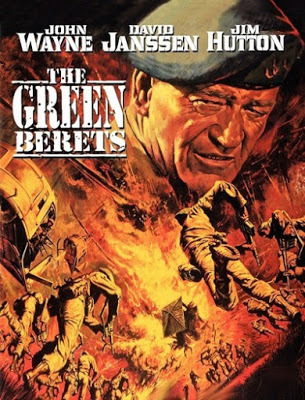
With Memorial Day fast approaching, it seems timely to eulogize a pop culture hero whose life was profoundly shaped by my generation’s war, the conflict in Vietnam. Back in 1966, Sgt. Barry Sadler’s “The Ballad of the Green Beret” was everywhere. You heard its rat-a-tat cadences on the airwaves; you saw its square-jawed composer perform it on the Ed Sullivan Show. John Wayne’s flag-waving 1968 film, The Greet Berets, used it as an anthem. (The film may have been scorned by critics—and by many vets who considered it a fairytale—but it earned a then- impressive $21 million at the box office.)
The lyrics of “The Ballad of the Green Beret” salute what it deems the U.S. Army’s most valued assets: “Silver wings upon their chest/ These are men, America's best.” They are, in Sadler’s words, “Men who mean just what they say/ The brave men of the Green Beret.” It has fallen to my friend and colleague Marc Leepson to explore the soldier behind the song.
Leepson’s new biography is titled The Ballad of the Green Beret: The Life and Wars of Staff Sergeant Barry Sadler From The VietnamWar and Pop Stardom to Murder and an Unsolved, Violent Death. At the start of the book, Leepson explains his own bona fides via a dedication “to my fellow Vietnam War veterans and in memory of those who made the ultimate sacrifice in that war.” It’s his challenge to explain the era to those who think of Vietnam as ancient history. As a former soldier himself, he understands the Army’s reverence for machismo, and for the kind of heroics that show up in John Wayne movies.
Barry Sadler, who’d survived a rough upbringing, found purpose in his life when he joined the Army’s Special Forces and trained as a combat medic. Self-taught on the guitar, he wrote a number of songs that he enjoyed performing for his fellow Green Berets once he arrived in Vietnam in 1965. One of those songs, “The Ballad of The Green Beret,” caught on, to the extent that Sadler was eventually signed to a major recording contract stateside. His album came out in January 1966, and the military was happy to use the handsome soldier as what Leepson calls “a human recruiting poster.”
But once Sadler left the Army, he did not fit in well with civilian life. He spent much of his time drinking, womanizing, squandering money, and getting into heated political arguments. He briefly considered becoming an actor, but could drum up only limited roles in middle-brow TV series like Death Valley Days. There was an attempt to write a Vietnam-themed screenplay, which came to nothing. The surprise was that he eventually found a lucrative niche writing pulp novels full of history and gore. His private life, though, remained messy in the extreme. It was a life in which violence was never very far away.
Marc Leepson speculates that Barry Sadler was victimized by his own success. It was a success that likely would not have come to him if his patriotic song had been released a year or two later, once the nation had begun to turn against the Vietnam War. “Simply put,” says Leepson, “his tough guy brand did not sell as the nation went through the political, social, and cultural upheaval of the Sixties.” Leepson views Sadler, born in 1940, as not a Baby Boomer but a throwback to World War II’s Greatest Generation. His sad life and mysterious death suggest a man out of place and out of time. May he rest in peace.
Published on May 26, 2017 11:21
May 23, 2017
Mr. Dave Goes to Washington
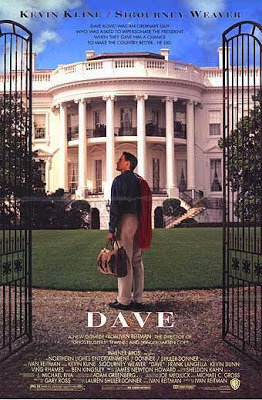
It’s been almost 25 years since an amiable fable called Dave appeared on the nation’s movie screens. Dave, which stars Kevin Kline and Sigourney Weaver, takes a basically light-hearted look at the U.S. presidency. It’s a Capraesque take on the notion that a man of the people is a vast improvement over most career politicians. What’s striking in 2017 is how much the film resonates with the facts of the administration in today’s Washington. At a time when the rumblings about impeachable offenses are growing louder, it’s very pleasant to see a movie in which skullduggery gets punished and American ideals prevail.
In Dave, the protean Kevin Kline gets the opportunity to play two roles. The first is that of President Mitchell, a man capable of delivering idealistic speeches that delight his supporters. Mitchell, who looks a great deal like the first President Bush, may have a presidential air, but he’s at base a cold-hearted skunk who’s too busy canoodling with his secretary (Laura Linney) to want to show up at ceremonial events. That’s why the lookalike Dave Kovic, a gentle everyman who runs a temp agency, is recruited to stand in for him at smile-and-wave events. Things take an unlikely turn when President Mitchell suffers a massive stroke in flagrante delicto. The conniving chief of staff played by the wonderfully sinister Frank Langella sees this as a prime opportunity to install Dave permanently in the White House. The idea is that Dave, playing the role of the president, will serve as a convenient puppet, with Langella’s character pulling the strings.
Needless to say, the worm turns. It’s not long before Dave discovers that he has a mind of his own, and that he’s in a position to use his new-found power for the good of the common man. In entertaining kids at a local homeless shelter and then throwing his support toward an expensive but idealistic jobs bill, he wins widespread public approval, as well as the affection of a First Lady (Sigourney Weaver) who has long been disgusted by her philandering spouse. Of course Dave’s time in the sun cannot last. Langella is up to no good, and there are some excellent plot twists and turns before order is restored and happy days are here again.
Most real-life Washington DC power brokers obviously enjoyed the concept of Dave, because many of them appear on camera. Such 1990s politicians as Senators Tip O’Neill, Paul Simon, Howard Metzenbaum, and Alan Simpson are interviewed about the doings of the fictitious President Mitchell by real-life journalists like Robert Novak, Sander Vanocur, and NPR’s Nina Totenberg. The late Helen Thomas asks sharp questions at a presidential press conference. Jay Leno tells political jokes, and Larry King provides acerbic commentary. The real power structure, in other words, supports the fantasy.
That was then; this is now. What struck me about Dave is its conviction that a man with no political experience is better equipped than many political regulars to make important decisions. We’ve just been through an election in which voters chose as the nation’s leader a political novice who relies on his gut instincts rather than a well-formulated sense of policy. Of course, through much of Dave, the novice is putty in the hands of a behind-the-scenes manipulator bent on subverting the system for his own gain. Though Dave ultimately wises up, he knows better than to think he has all the tools he needs to run a nation. Though the film ends on a predictably upbeat note, the system stays intact. In our own world, let’s hope that remains so.
Published on May 23, 2017 12:32
May 19, 2017
A Kylo By Any Other Name . . .

I just read a Los Angeles Times article with a provocative headline: “Naming Babies Goes Over to the Dark Side.” According to data released last week by the federal Social Security Administration, 238 social security cards were issued in 2016 to American newborns named Kylo. That finding makes Kylo the 901st most popular boy’s name for the year. Kylo’s ranking isn’t nearly as impressive as that of old-fashioned names like Noah, William, and James, which (along with Liam and Mason) make up the 2016 top five. But it’s the Hollywood connection that renders the fast-rising popularity of Kylo so noteworthy.
The name Kylo wasn’t on anybody’s radar until late 2015, and the debut of the hugely popular Star Wars: The Force Awakens. Obviously the character of Kylo Ren, played by a charismatic Adam Driver, captured the imagination of a great many moviegoers, some of whom were soon to become parents.. Thing is – Kylo Ren, the lovechild of Han Solo and Princess Leia, has been wooed over to the Dark Side. In the course of the film, he takes on many of the characteristics of his evil grandfather, Darth Vader. At the risk of spoiling plot surprises, let’s just say he’s not the sort of son who does his father proud. (As a matter of fact, he does his father in.) So proud parents who bestow this name upon their offspring would seem to me to be asking for trouble.
Nobody asked my advice, of course. And I’m well aware that the American public is susceptible to choosing baby names based on Hollywood celebrities and their most famous roles. The wonderful Bette Midler, who’s now triumphing on Broadway in a revival of Hello, Dolly!, was named after her mother’s favorite star, Bette Davis. (The difference in pronunciation stems from the fact that Midler’s mom, living in Hawaii, had never actually heard the name of the great Davis pronounced aloud.) The mother of Dustin Hoffman gave her firstborn the name of matinee idol Ronald Colman. When a second son arrived, she bestowed on him the moniker of an old-time cowboy star, Dustin Farnum. And I know a Baby Boomer, an African-American woman, who was so impressed with the dignity and courage of Sidney Poitier that she was determined to include the name Sidney on her son’s birth certificate. The only problem was that she didn’t particularly like the name itself. So she agonized throughout her hospital stay, until finally committing to the Nigerian name Kamau.
Popular movies can encourage a whole spate of babynaming. In 1970 it was Love Story, a sappy novel that became a weepy film about a perfect romance that ends in tragedy. I’m certain it was the popularity of Love Story that led to the naming of so many little Jennifers and Olivers shortly thereafter. Long before that era,, Jenny was the name of my elderly great-aunt. But the Seventies ushered in a whole flock of little Jennifers. Many of them are now in their mid-thirties, and busy dubbing their kids Kylo.
The article in the Times points out that names in the news can discourage as well as encourage babynaming. In the Nineties, with the popularity of TV’s Friends, lots of little girls were dubbed Monica after the character played by Courtney Cox. But by the end of the decade, the sex scandal involving President Clinton and White House intern Monica Lewinsky made the name suddenly far less attractive. And Caitlin, in all its variations, plunged in popularity in 2016. This doubtless related to public scrutiny when a certain Bruce was transformed into Caitlyn Jenner.
Published on May 19, 2017 10:00
May 16, 2017
Jeanine Basinger Says “I Do”

In late 2015, The Hollywood Reporter hosted a gathering of Hollywood insiders, all thirty-three of them former students and acolytes of Wesleyan cinema prof Jeanine Basinger. Such power figures as TV honcho Joss Whedon, action director Michael Bay, Oscar-winning screenwriter Akiva Goldsman, and filmmaker Paul Weitz showed up promptly at the early-morning photo shoot, knowing full well that Professor Basinger would never tolerate late arrivals.
Basinger’s students benefit from her encyclopedic knowledge of film history. Actor Bradley Whitford has said, "Every time I'm in a meeting and it comes out that I went to Wesleyan, they ask the same question—how is it possible that so many successful people in Hollywood come out of such a tiny liberal arts school in Connecticut? The answer is Jeanine." And film critic A.O. Scott of the New York Times admits that "I took a job teaching at Wesleyan as an excuse to hang out and talk about movies with Jeanine. There's nothing she doesn't know."
Despite her busy teaching schedule, Basinger has found time to write nearly a dozen books, ranging from movie star biographies (Shirley Temple; Gene Kelly) to 1993’s A Woman's View: How Hollywood Spoke to Women 1930-1960. I just finished reading her most recent work: I Do and I Don't: A History of Marriage in the Movies (2013). Herself married for half a century, Basinger is understandably interested in how Hollywood movies portray an institution that some now feel is a thing of the past.
Basinger’s detailed account, which begins back in the silent era, makes the case that the film industry has traditionally been far less interested in the workings of a marriage than in getting its characters to the altar. At a time when sex outside of marriage was considered taboo, it was exciting to see how the leading characters overcame obstacles, prejudices, and misunderstandings in order to seal their relationship with a ring and a kiss. In Basinger’s own words, “Not being allowed to have sex created the essential frisson of the romantic comedy; the leading man and woman dying to make love, but unable to do so.” Today, with most of us far more relaxed about sexuality, she’s convinced that what’s now called the “romcom” is struggling to find a modern equivalent for what kept the lovers apart in days of old.
As for movies that are about the marriage rather than the courtship, Basinger comes up with a number of nifty examples. I was particularly taken with her section on World War II, a time when husbands went off to war and lonely wives abounded. Male stars too enlisted in significant numbers, which meant that Hollywood’s ranks were full of talented women, both established celebrities and talented newcomers. It made total sense for Hollywood during the war years to cater to wives (many of them serving in the workforce) who longed for wholesome and uplifting entertainment. Movies like 1944’s Since You Went Away, starring an appealing Claudette Colbert along with the young Jennifer Jones and teenaged Shirley Temple, focused on the sacrifices made by women on the homefront, reminding them that they too were an integral part of the war effort.
In the post-war 1950s, marriage became the domain of television. Think I Love Lucy, Father Knows Best, and all those early sitcoms that moved between the living room and the kitchen. On the big screen, though, superheroes have long crowded out husbands and wives. And films showing marriage now generally play up its grimmer aspects. The lethal War of the Roses (1989) is an extreme example of what Basinger wryly calls today’s “nuclear marriage”films.
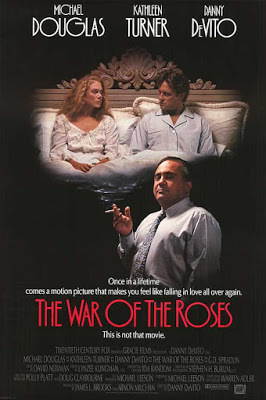
Published on May 16, 2017 11:37
May 12, 2017
Harry Belafonte’s Reading Rainbow
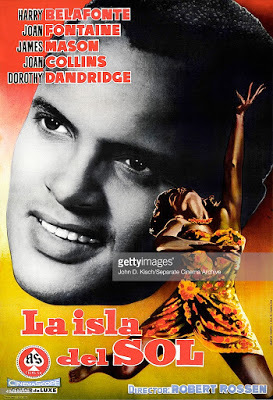 Spanish-language poster for "Island in the Sun" I last wrote about singer, actor, and social activist Harry Belafonte on the occasion of his 90th birthday. That celebration took place on March 1 of this year. But I’m back to Belafonte again, because he’s just received an honor worth cheering about. The 115th Street Library in New York’s Harlem will henceforth bear his name. What makes this extra-special is the fact that Belafonte grew up in the neighborhood. He struggled with dyslexia and eventually dropped out of high school, but still thirsted for book-learning. That’s where the local library came in. It was a place where he could pursue his education on his own terms. And it was eventually in a theatre group at another Harlem public library, the noble Schomburg Center, that he developed his acting chops.
Spanish-language poster for "Island in the Sun" I last wrote about singer, actor, and social activist Harry Belafonte on the occasion of his 90th birthday. That celebration took place on March 1 of this year. But I’m back to Belafonte again, because he’s just received an honor worth cheering about. The 115th Street Library in New York’s Harlem will henceforth bear his name. What makes this extra-special is the fact that Belafonte grew up in the neighborhood. He struggled with dyslexia and eventually dropped out of high school, but still thirsted for book-learning. That’s where the local library came in. It was a place where he could pursue his education on his own terms. And it was eventually in a theatre group at another Harlem public library, the noble Schomburg Center, that he developed his acting chops.Belafonte was born in 1927. I first learned about him as a small child while taking classes at the remarkable (and remarkably multi-ethnic) Lester Horton Dance Theater in West Hollywood. His first album was often on the turntable, and I grew to love his way with gentle and humorous American folk ballads. That was 1954, and I doubt his Mark Twain and Other Folk Favorites sold many copies. But two years later he was earning gold records for introducing the American public to calypso rhythms. Suddenly the whole country was shaking its hips to a Caribbean beat. The hit albums kept coming, and when a Belafonte ensemble showed up at L.A.’s Greek Theatre or New York’s Carnegie Hall, you were assured of an evening full of song, dance, humor, and a soupçon of social consciousness. What was the best thing about Harry Belafonte? He had a warm, strong voice; a supple body; an impish sense of humor; a keen knowledge of showmanship. But beyond all that, he was so electrifyingly handsome that the ladies in the audience were swept away. Take my mother, the ultimate Belafonte fan. When he performed in Los Angeles, she bought tickets months in advance. When he brought his act to Las Vegas, she was there. Fortunately, my father tolerated her obsession. He might not have been quite as rapturous about the man’s sex appeal, but he enjoyed Belafonte too.
So you can imagine my childhood. When Belafonte was in town, normal household routine came to a standstill. My mother and father would see a performance; then she’d return with me and my little sister. One year, when I was ten, we really had it down to a science. The three of us arrived early and scouted out the spot where the star would arrive. When he got out of his car, there were two little girls waiting with autograph books and big smiles. He politely commented on my dress, at which I proudly announced that my mom had bought it on sale. I don’t have a snapshop of that moment, but years later—at a press luncheon—someone snapped an excellent photo of Belafonte and a college-age me. My mom immediately posted it on the family bulletin board. Occasionally I got covered over by more recent images, but Belafonte’s radiant smile was on full display in the house as long as my mom was alive. Belafonte of course was far more than a singer. He did well in a number of acting roles, but largely abandoned Hollywood in order to stump for civil rights and other social causes. I confess I never thought of him in conjunction with libraries. But since books have always been my own magic carpet, I’m thrilled that this idol of my youth will now be associated with the written word.
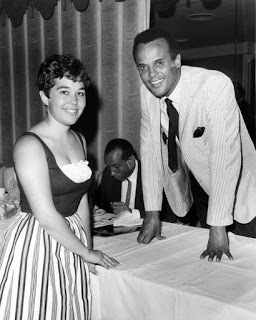 I'm the one on the left.
I'm the one on the left.
Published on May 12, 2017 09:51
May 9, 2017
Carl and Rob Reiner: Some Big Shoes to Fill
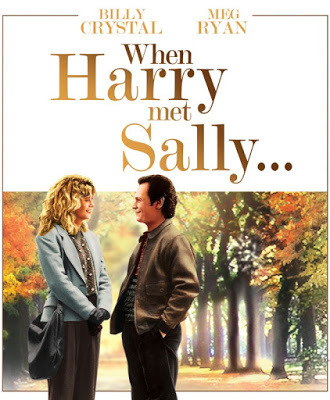
On April 7, two Reiners added their footprints to the forecourt of Hollywood’s Chinese Theater, thus becoming the first father-son duo to make a concrete impression upon the entertainment industry. (Sorry about that!) It was an honor long overdue. Without Carl and Rob Reiner, the world would be a much less funny place.
There are (or were) other Reiners too. Carl’s wife Estelle, who passed away in 1994 after 64 years of marriage, was a professional singer. But she will forever be known for her scene-stealing line in her son’s 1989 film, When Harry Met Sally—“I’ll have what she’s having.” Rob’s sister Annie is an author, playwright, and poet. And Rob’s kid brother Lucas has been at the helm of several indie film projects. I feel a bit sorry for Lucas, who by all reports is a good guy, because being the junior Reiner can’t be easy. Many years ago, as a fledgling day camp counselor, I was in charge of the bus that picked up young Lucas every day. Knowing what family he came from, I kept waiting for this little tyke to make me laugh.
As for Carl Reiner, where to begin? He won his spurs in early TV, as both writer and second banana on Sid Caesar’s hilarious variety shows. He created The Dick Van Dyke Show, and played one of its most memorable characters, the egomaniacal Alan Brady. He played straight man to Mel Brooks’ unforgettable 2000 Year Old Man, using his improv skills to guide Brooks’ zany performance. He acted in movies like The Russians are Coming, The Russians are Coming. As a film director, he had a cult hit with Where’s Poppa, followed by a huge hit with Oh, God! And he directed and co-wrote four films, including The Jerk and Dead Men Don’t Wear Plaid, that helped establish Steve Martin as a comedy icon. Still active at 95, he has newly announced an autobiography, to be called Too Busy to Die. In doing all of this, he has made bald look beautiful.
I first became aware of Rob Reiner when I was a theatre critic for the UCLA Daily Bruin, circa 1969. I was sent to a small theatre in Hollywood to see a pair of comic one-acts. The first has totally slipped from my memory, but I still remember the second, “The Howie Rubin Story.” In it Reiner portrays a young boy with a Walter Mitty-like imagination: he likes to picture himself doing great things. So endearing was Rob in this role that I instantly knew he was destined for stardom. And so it came to pass. After playing some small sitcom roles and doing some writing for the Smothers Brothers Comedy Hour, Rob was cast as Michael Stivic, son-in-law and left-leaning nemesis to Archie Bunker on the legendary All in the Family. So completely was he identified with this role by the American public that he’s still known to quip, “"I could win the Nobel Prizeand they'd write 'Meathead wins the Nobel Prize'.
Today he’s highly regarded as a director of comedic tour-de-forces like This is Spinal Tap and The Princess Bride. But he’s also been honored for films ranging from the poignant Stand by Me to the creepy Misery to the tough-minded legal drama, A Few Good Men. These days he’s also known as a dedicated social activist, promoting marriage equality and initiatives designed to help young children. In 2006, there was talk of him running to replace Arnold Schwarzenegger as governor of California. I would love to have seen that campaign: The Terminator versus The Meathead.
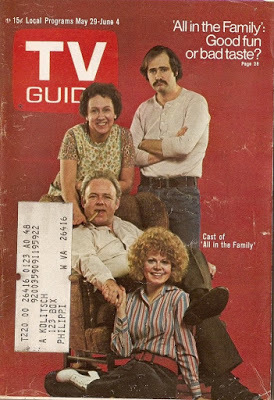
Published on May 09, 2017 12:49
Carl and Rob Steiner: Big Shoes to Fill

On April 7, two Reiners added their footprints to the forecourt of Hollywood’s Chinese Theater, thus becoming the first father-son duo to make a concrete impression upon the entertainment industry. (Sorry about that!) It was an honor long overdue. Without Carl and Rob Reiner, the world would be a much less funny place.
There are (or were) other Reiners too. Carl’s wife Estelle, who passed away in 1994 after 64 years of marriage, was a professional singer. But she will forever be known for her scene-stealing line in her son’s 1989 film, When Harry Met Sally—“I’ll have what she’s having.” Rob’s sister Annie is an author, playwright, and poet. And Rob’s kid brother Lucas has been at the helm of several indie film projects. I feel a bit sorry for Lucas, who by all reports is a good guy, because being the junior Reiner can’t be easy. Many years ago, as a fledgling day camp counselor, I was in charge of the bus that picked up young Lucas every day. Knowing what family he came from, I kept waiting for this little tyke to make me laugh.
As for Carl Reiner, where to begin? He won his spurs in early TV, as both writer and second banana on Sid Caesar’s hilarious variety shows. He created The Dick Van Dyke Show, and played one of its most memorable characters, the egomaniacal Alan Brady. He played straight man to Mel Brooks’ unforgettable 2000 Year Old Man, using his improv skills to guide Brooks’ zany performance. He acted in movies like The Russians are Coming, The Russians are Coming. As a film director, he had a cult hit with Where’s Poppa, followed by a huge hit with Oh, God! And he directed and co-wrote four films, including The Jerk and Dead Men Don’t Wear Plaid, that helped establish Steve Martin as a comedy icon. Still active at 95, he has newly announced an autobiography, to be called Too Busy to Die. In doing all of this, he has made bald look beautiful.
I first became aware of Rob Reiner when I was a theatre critic for the UCLA Daily Bruin, circa 1969. I was sent to a small theatre in Hollywood to see a pair of comic one-acts. The first has totally slipped from my memory, but I still remember the second, “The Howie Rubin Story.” In it Reiner portrays a young boy with a Walter Mitty-like imagination: he likes to picture himself doing great things. So endearing was Rob in this role that I instantly knew he was destined for stardom. And so it came to pass. After playing some small sitcom roles and doing some writing for the Smothers Brothers Comedy Hour, Rob was cast as Michael Stivic, son-in-law and left-leaning nemesis to Archie Bunker on the legendary All in the Family. So completely was he identified with this role by the American public that he’s still known to quip, “"I could win the Nobel Prizeand they'd write 'Meathead wins the Nobel Prize'.
Today he’s highly regarded as a director of comedic tour-de-forces like This is Spinal Tap and The Princess Bride. But he’s also been honored for films ranging from the poignant Stand by Me to the creepy Misery to the tough-minded legal drama, A Few Good Men. These days he’s also known as a dedicated social activist, promoting marriage equality and initiatives designed to help young children. In 2006, there was talk of him running to replace Arnold Schwarzenegger as governor of California. I would love to have seen that campaign: The Terminator versus The Meathead.

Published on May 09, 2017 12:49
Beverly in Movieland
I write twice weekly, covering topics relating to movies, moviemaking, and growing up Hollywood-adjacent. I believe that movies can change lives, and I'm always happy to hear from readers who'd like t
I write twice weekly, covering topics relating to movies, moviemaking, and growing up Hollywood-adjacent. I believe that movies can change lives, and I'm always happy to hear from readers who'd like to discuss that point.
...more
- Beverly Gray's profile
- 10 followers



